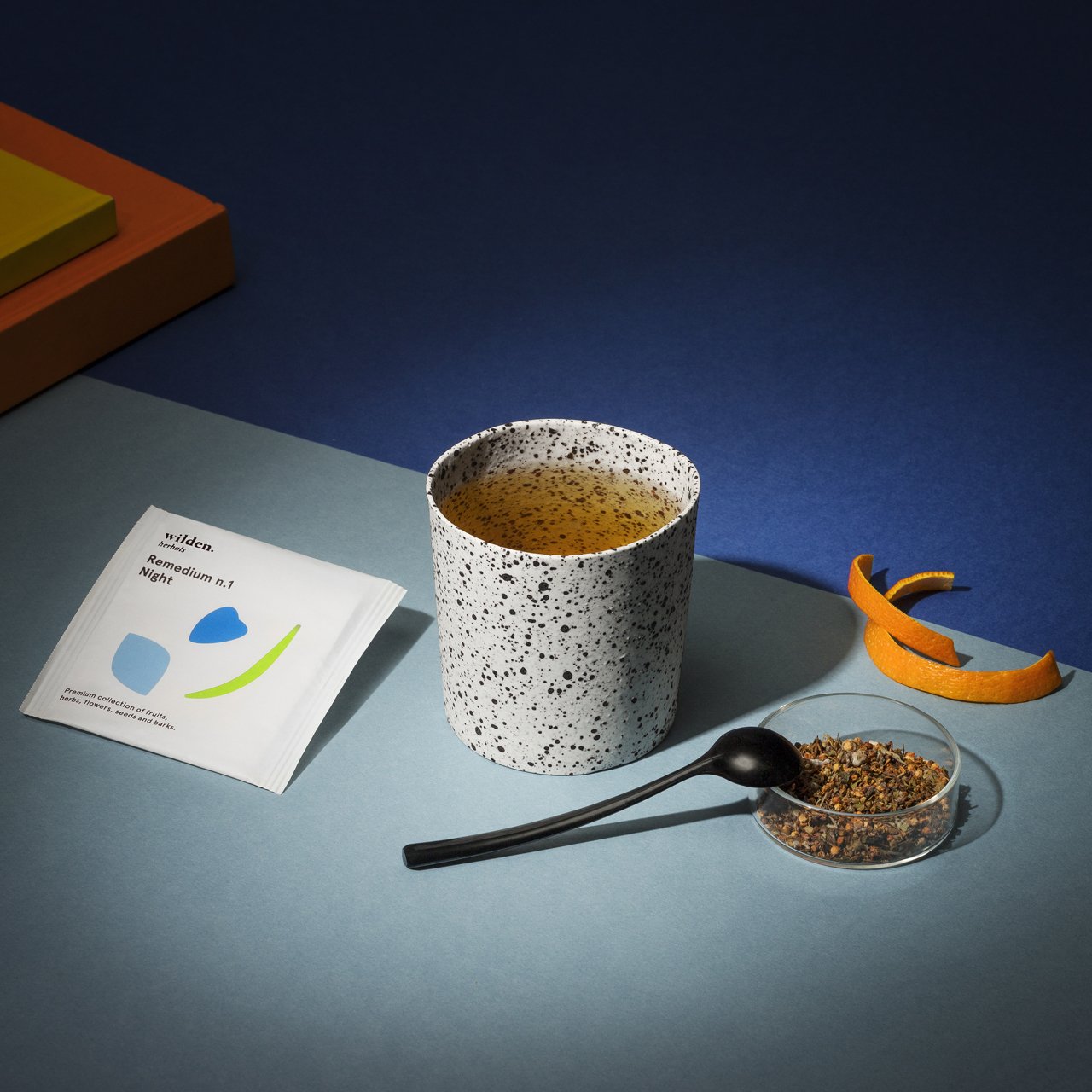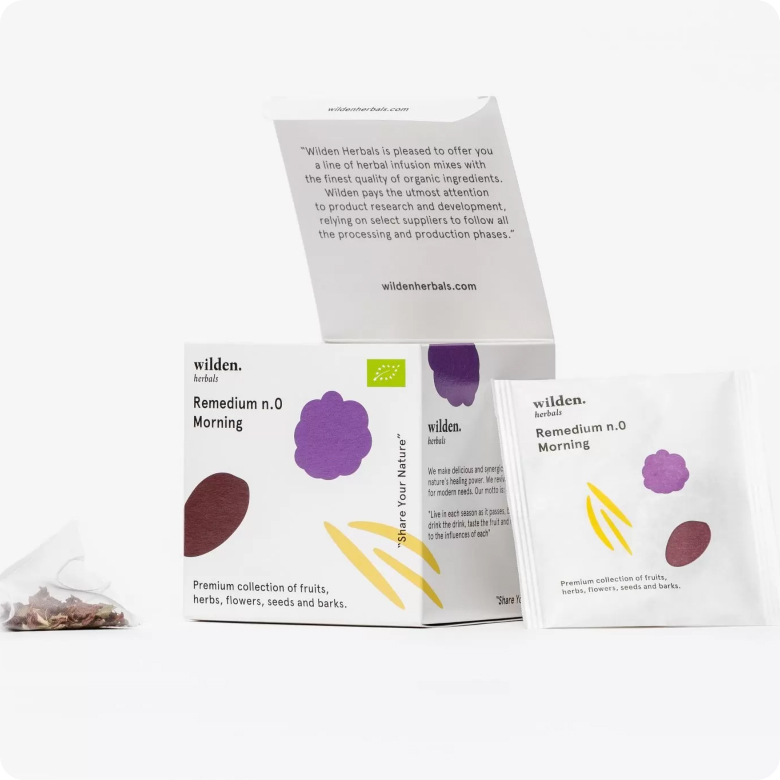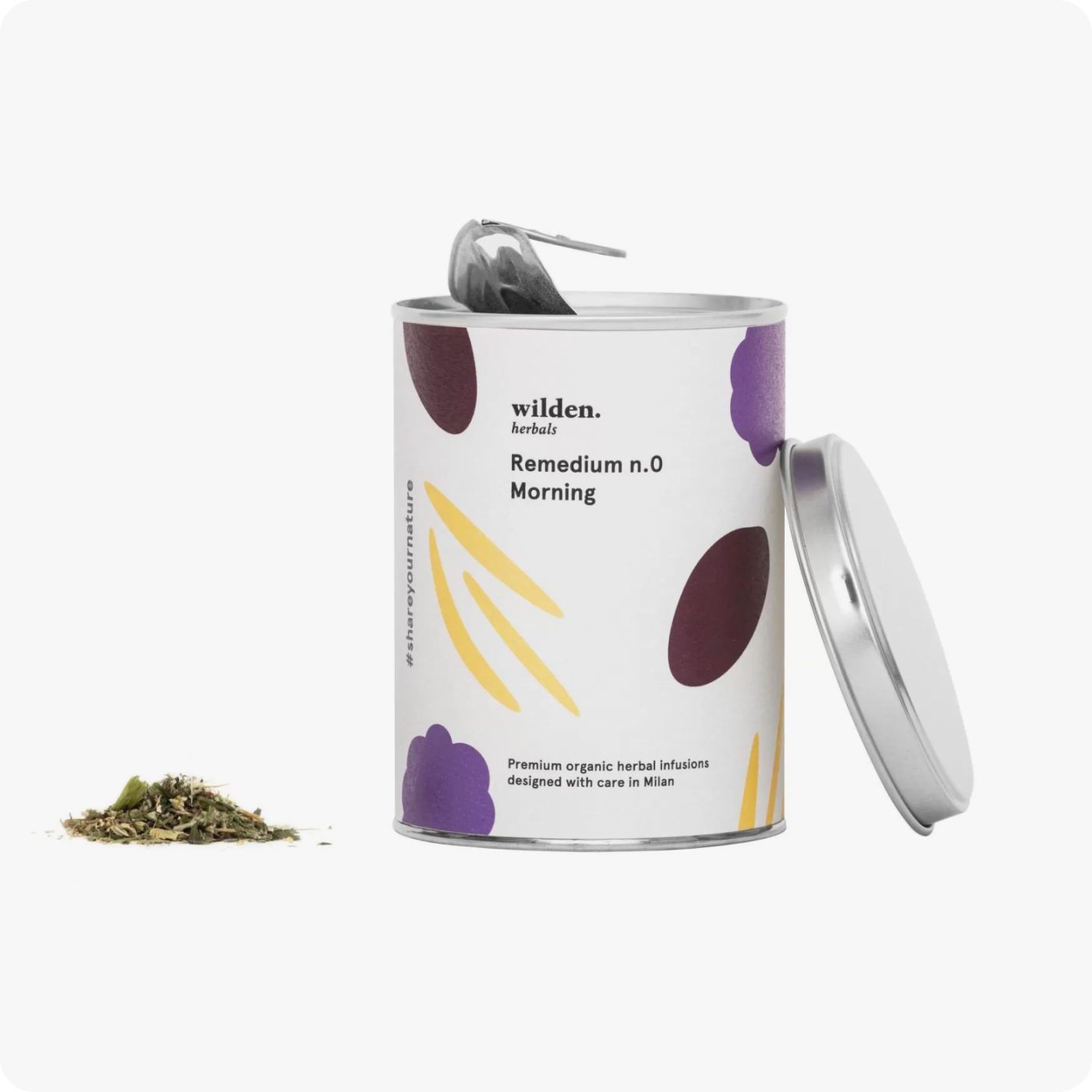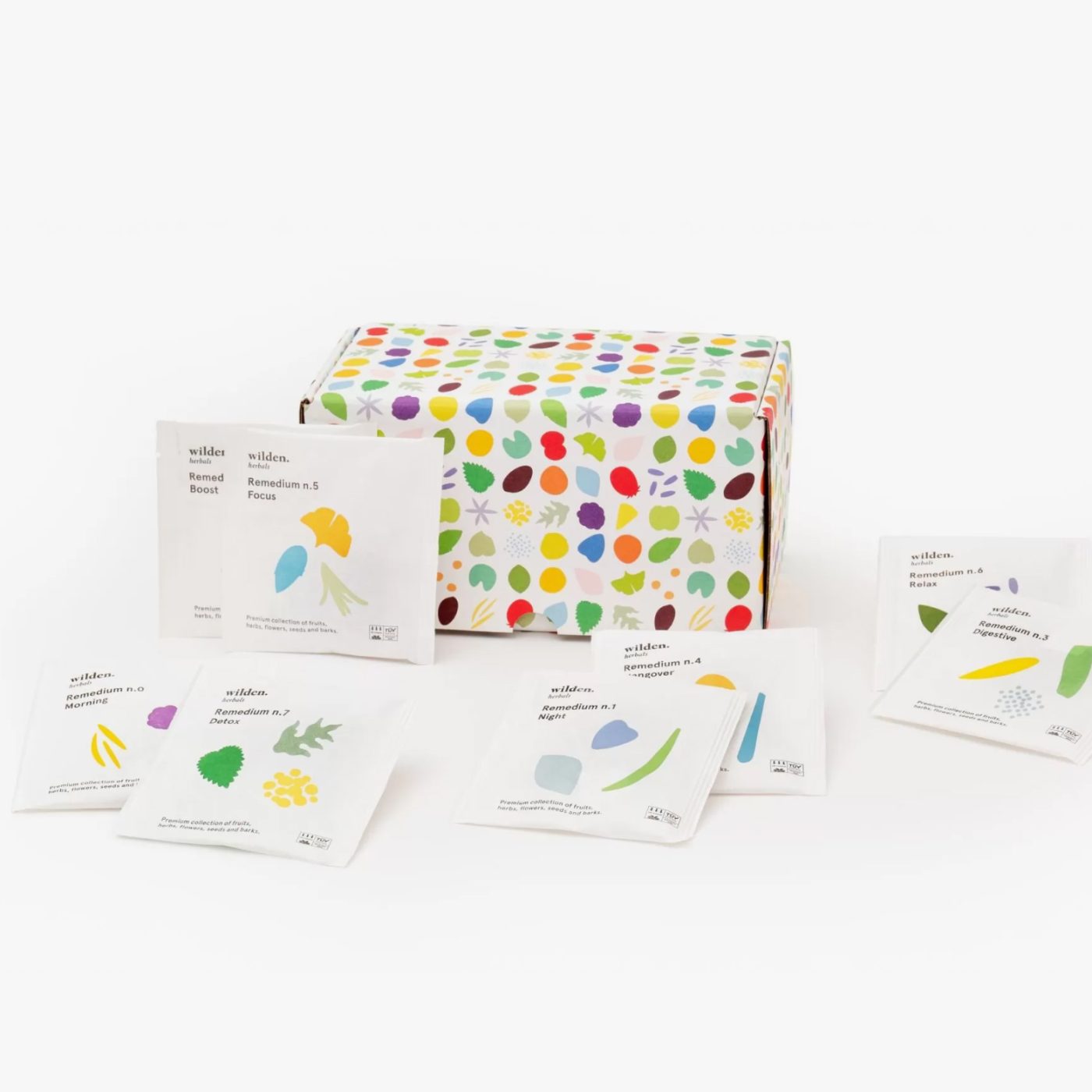Remedium No. 1 – Night
From composition to benefits, Wilden.herbals chronicles its herbal teas one by one on a journey to discover the power of plants.
Remedium No. 1 – Night is an herbal tea with calming and sedative properties, able to conciliate sleep and improve the quality of rest at night, perfect for ending a long day.
Remedium No. 1 – Night is a blend of 8 herbs that balance each other well, reinforcing their effects: the sweet flavor oforange, the delicate taste of mallow and chamomile, combined with the pleasant aroma of fragrant starlet; lemon balm, passion flower, linden and hawthorn act in synergy, promoting intense and pleasant relaxation.

Lemon balm, Melissa officinalis
Chamomile, Matricaria chamomilla
Passiflora, Passiflora incarnata
Linden tree, Tilia tormentosa
Hawthorn, Crataegus Oxyacantha
Sweet orange, Citrus sinensis
Mallow, Malva officinalis
Odorous starlet, Galium odoratum
This is the composition per 100g:
Lemon balm, Melissa officinalis
Lemon balm, also known as Cedronella, lemon balm or lemon grass, is traditionally used in phytotherapy against nervous excitement. Lemon balm excelled in the gardens of Benedictine monasteries and formed part of the composition of one of their famous liqueurs, the “elixir of long life.” The pleasant aroma and flavor of lemon are due to the presence of essential oil in the leaves, which are employed in states of anxiety with somatizations affecting the gastrointestinal system.
Chamomile, Matricaria chamomilla
Chamomile flowers are used to prepare infusions with sedative, calming and anti-inflammatory virtues. The presence of flavanoids and coumarins grants the plant antispasmodic properties that produce muscle relaxation. Precisely because of its muscle-relaxing virtues, chamomile is used as a useful sedative in cases of nervous tension, stress, and anxiety. Its anti-inflammatory effects also help against inflammation, digestion and heartburn.
Passiflora, Passiflora incarnata
Passionflower, better known as the plant that produces passion fruit, has a calming, sedative and anxiolytic action and is among the most widely used remedies in herbal medicine for disorders of the nervous sphere. The flavanoids in it act on the spinal cord and stimulate physiological sleep without night awakenings, morning numbness, and without producing addiction. The plant, of Mexican origin, was used by the Aztecs as a relaxant.

Linden tree, Tilia tomentosa
Norse peoples revered this sacred plant as a symbol of longevity (it can reach 2,000 years). The flowers and leaves are used in herbal medicine for their rich concentration of flavanoids, tannins, essential oils and coumarins, which are useful in treating stress, insomnia, anxiety and headaches. It is said that Tilia tomentosa, acting at the root, can solve what are the side effects of our “troubled” state of mind.

Hawthorn, Crataegus Oxyacantha
Belonging to the Rosaceae family, its name is derived from the Greek word kràtaigos, a term that invokes the concept of “strength.” Hawthorn ‘s benefits are mainly associated with its cardioprotective and cardiotonic properties. In addition, the presence of the active ingredient vixetin gives the plant a natural sedative, spasmolytic and anxiolytic action useful against anxiety, insomnia, agitation, anxiety and nervousness.

Sweet orange, Citrus sinensis
The peel of thesweet orange is rich in essential oils that, in addition to imparting a pleasant aroma to our mix, have significant health benefits. Its sedative and calming properties are useful for combating insomnia, counteracting nervous disorders, depression, anxiety and nervousness. In addition, it is an antispasmodic remedy that has a relaxing action on the muscles and is therefore indicated in cases of muscle tension, fatigue and stress.
Mallow, Malva silvestris
Mallow has been known for its emollient virtues since ancient times. Its name comes from the Latin mollire, meaning “able to soften,” and the Greek malachè, “to make soft.” The flowers and leaves are rich in mucilage, which coats mucous membranes with a viscous layer that protects them from irritants. Hence its emollient and anti-inflammatory properties. Mallow herbal tea is recommended as a soothing and relaxing drink to be taken in the evening to relax and sleep better. It also has digestive virtues and is useful in cases of stomach acidity.
Odorous starlet, Galium odoratum
Galium odoratum, also known as Stellina odorosa or asperula, is commonly found in the wild in meadows at 1,000 meters between May and July. It is traditionally used in folk medicine for its aperitif, tonic, digestive, sedative and diuretic, cholagogic, and emmenagogic qualities. Because of its properties and delicious flavor (coumarin), it is often used to flavor schnapps and herbal teas.



Remedium No. 1 – Night herbal tea is a multifaceted beverage that must be known and appreciated ingredient by ingredient. This reading is intended to be an in-depth study in order to promote conscious consumption for total tasting.


© 2021 Wilden.herbals – Contents are the property of Wilden.herbals S.r.l., reproduction is prohibited.
Bibliography:
- Wagner, H., & Ulrich-Merzenich, G. (2013). Evidence and rational based research on Chinese drugs. Wien: Springer.
- Phytotherapy, rational use of plant drugs, F. Capasso G. Grandolini A.A. Izzo Springer
- Bates SH, Jones RB, Bailey CJ, Insulin-like effect of pinitol, British Journal of Pharmacology 2000; 130(8): 1944-1948
- Kamara BI, et al, Polyphenols from honeybush tea, Journal Agricultural Food Chemistry 2003; 51(13): 3874-3879
- Kenneth M. Klemow, Andrew Bartlow and Justin Crawford, Herbal Medicine: Biomolecular and Clinical Aspects.
- Barnes Joan, Anderson A. Linda, Phillipson David J. Herbal Medicines, Pharmaceutical Press 2007.
- Blumenthal M., Goldberg A., Brinckmann J (Ed). Expanded Commission E Monographs, American Botanical Council and Integrative Medicine Communications 2000.
- European Scientific Cooperative on Phytotherapy (Ed). Melissea folium, ESCOP Monographs on the Medicinal Uses of Plants Drugs, Centre for Complementary Health Studies, Université d’Exeter 1996.
- Franchomme P. et Pénoël D. L’aromathérapie exactement. Encyclopédie de l’utilisation thérapeutique des huiles essentielles. (Aromatherapy exactly. Eencyclopedia of the therapeutic use of essential oils).
- Roger Jollois Éditeur 1990 Pizzorno JE Jr, Murray Michael T (Ed). Textbook of Natural Medicine, Churchill Livingstone 2006
- Organisation mondiale de la santé (World Health Organization). WHO monographs on selected medicinal plants, vol. 2, Suisse, 2002.







